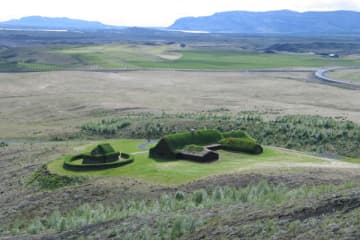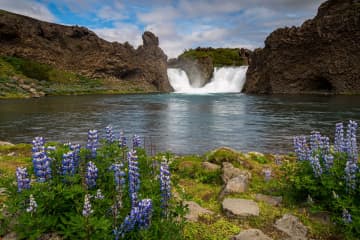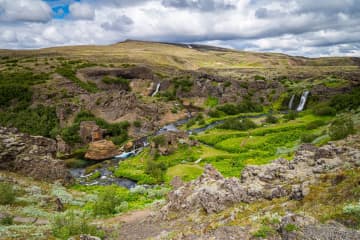Þjóðveldisbær / The commonwealth farm




Þjóðveldisbær / The commonwealth farm is situated under the mountain Sámstaðamúli, and it is an attempt to rebuild in the most credible way, a large farm since about 1100. The Commonwealth farm is based on the ruins of the former manor farm, Stöng in Þjórsárdalur, which is considered to have been abandoned after its destruction in the Hekla eruption of 1104, along with about 20 other farms in the area. When building the Commonwealth farm, every effort was made to replicate as precisely as possible the ruins of the farm at Stöng and thus to try to give as credible a picture as possible of a dwelling of an Icelandic chieftain from the Age of Settlement. The farm building itself is a museum piece illustrating ancient handwork, and where this was not possible, imagination took over, as is the case in historical novels. The Commonwealth farm is a living witness to the fact that the dwellings of the Icelanders of yore were well built and majestic constructions.
To celebrate the 1100 anniversary of the Settlement of Iceland in 1974, it was decided to reconstruct a manor farm from the Age of Settlement. The well-preserved ruins at Stöng were very suitable on which to base a replica manor farm. Building work on the Commonwealth farm commenced in 1974, and it was completed three years later. The building was formally opened on 24 June 1977.
The newest addition to buildings at the Commonwealth farm is the stave church built-in 1999-2000 and established before the summer of 2000. It is built from Norwegian electoral wood. It is a gift from The Norwegians on the occasion of 1000 years of Christianity in the country and the finding of North America.
The commonwealth farm is open from the 1st of June to the 31st of August; more information about opening hours and admission fees can be found here: www.thjodveldisbaer.is




